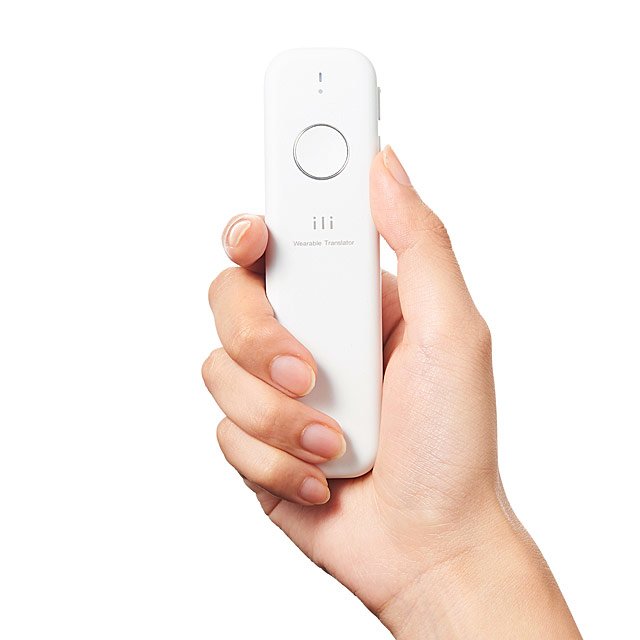A couple of months ago, my friend showed me this pocket-size portable translator she rented for her upcoming trip to Japan. It is certainly not a prevailing tool that everyone gets when they travel, but the language barrier is for sure something everyone has experienced. This makes the portable translators a good example of assistive technology.
Most portable translators are designed along the lines of translating what you’re hearing (or saying) in real-time by just pressing one button. Since this is a product that only does one thing- translate, to make it straightforward and easy to use, most devices have a minimum screen or no screen, with only one or two buttons, a mic for input and a speaker for output.

To apply the social model of disability on the use case of a portable or any type of translating tool. Individuals are put in an environment where people don’t speak or understand their language, causing friction in communicating and interacting. The society also fails to provide comprehensive verbal or visual translation for every outside language. Therefore, individuals can be considered as someone with situational language impairment. A portable translator plays the role of the medium to remove one’s language barrier to living a full and independent life.
The competing products for portable translators are mobile translating apps. Although there is only a very small population that uses portable translators, there are elements that make portable translators more accessible for a certain group of people than translating apps. Since one of the biggest consequences caused by language barrier is it stops people from meeting locals and have meaningful conversations, here are the steps if we were to use a translating app to communicate with a local: 1) pull out your phone, 2) unlock the screen, 3) scroll through your menu and find the app, 4) set the correct translating language 5) type or say the sentence, 6) waite for the translation, 7) show it to the local. This might not be that tedious of work for someone experienced with technology, but it could be a hassle for less experienced people or people with vision impairment. Given the same scenario, with the use of a portable translator, you would only need to 1) pull out your device, 2) hold the button and speak 3) wait for the translation, which seems more viable to the excluded people for mobile apps. The minimum design of the interface and interaction of portable translators is aimed to ease out the friction of usability and accessibility of using the device itself and communicating with the outside world.
The reason why portable translators are only getting little attention despite good usability and accessibility is that the drawbacks are as noticeable. If we consider tourists without the ability to speak the language hence communicate with locals as people with situational language impairment, putting it under the medical model of disability, this would be a problem the individuals need to fix. Therefore, talking to a device in public or in front of other people is very likely to draw unnecessary attention to the fact of the disability causing negative effects. Portable translators are also not applicable to a person who is hard of hearing since they communicate in sign language. In addition, the affordability of portable translators is relatively low. With an average price of 200 dollars, most people find it not worth the price considering the low utilization ratio.
A portable translator can be very helpful as an assistive tool for people who face difficulties in communicating in a foreign environment. However, there are limitations and constraints that make the product favor certain user groups over others.
